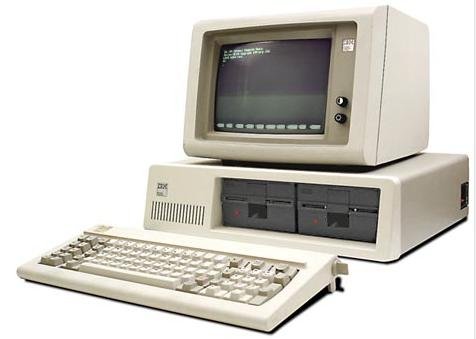The original IBM 5150 PC, 1981. Credit: IBM
Read a good review of a desktop PC system lately? In fact, read anything at all about a desktop PC system lately? Probably not.
Those who write about the tech world today go where the excitement is -- smartphones, tablets, laptops and such. So where does that leave the humble PC to which we grant a considerable amount of our desktop real estate?
There are those who argue the big desktop tower and its peripherals are going the way of the dinosaur.
Certainly sales are slowing as the PC reaches commodity status, purchased with little thought to anything except the lowest possible price.
"Who out there now needs a PC and doesn't [already] have one?" one analyst asked.
So will we abandon them, turning all our computing needs over to the smartphones and the tablets?
Permit me to suggest we won't, and to offer at least one reason that's likely sitting on your desktop right now.
The configuration of a desktop PC has changed very little since IBM debuted the first "personal" computer, its model 5150, in 1981.
There's the tower, of course, and a monitor, probably a printer, and for input a mouse and -- fanfare, please -- my offering for why we will always want to have a desktop PC around: the keyboard.
Bear with me, if you will, while I rhapsodize on a seemingly mundane activity: text input.
Need to compose an e-mail? Any smartphone can do it, although the tiny on-screen keyboard will demand a bit of care as you single-digit or swipe your way through the creation of your message.
A tablet's on-screen QWERTY keyboard is easier, and can even offer two-handed touch typing, if a bit awkwardly in your lap.
So, granted, nobody really needs a PC to e-mail or use Twitter.
But how about that book report for high school English class?
No one's going to try that on a smartphone or even a tablet (although a number of intrepid reporters have over the years filed a story or two by BlackBerry). For that you're going to have to move up to a laptop, at least, with its physical keyboard.
Although it must be said laptop keyboards can vary widely in ease of use -- or lack of it. You wouldn't want to keyboard "War and Peace" on a laptop.
But what if that's exactly what you want to do? Not write "War and Peace," of course, but what if you're intent on creating the next Great American Novel?
I suggest it will be the dinosaur to the rescue in the form of your desktop PC and most particularly its full-size, typewriter-form-factor keyboard.
People who write for a living, who pound out thousands of keystrokes day in and day out, want -- demand -- a keyboard that will let them speedily and accurately accomplish just that.
Admittedly, keyboards sold with desktop PCs can vary in quality, in their "touch and feel," which is why the Holy Grail for those seeking a good computer keyboard is one that hasn't been manufactured for more than 20 years.
I refer to the IBM Model M keyboard, first manufactured in 1984 when IBM was still making its own PCs before turning the market over to the Dells, the Compaqs and the Hewlett-Packards that have become today's generic PCs.
Known colloquially as the "clicky keyboard" and prized by heavy keyboard users for its tactile feedback, they're a staple of eBay auctions to this day and many are still going strong on desktops after nearly 30 years.
Yes, they're dinosaurs, like the PCs they came with, but I pounded out the keystrokes for this piece on one.
I rest my case, and my dinosaur PC is not going away anytime soon, thank you very much.















